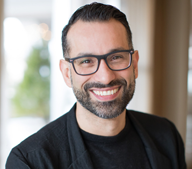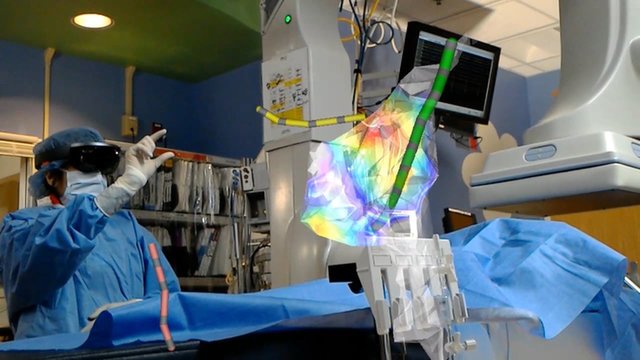Enhancing Visibility in to Interventional
Procedures
Jennifer Avari Silva, a practicing electrophysiologist, was faced with multiple challenges in the catheterization lab related to the lack of accessibility of the patient's anatomy and electrophysiology information. It was during this time that her husband, Jonathan Silva, an engineering professor, was invited to a Microsoft conference to learn about the launch of the Microsoft Holo Lens, which could be used to teach medical students about cardiac anatomy through a 3D model of the human heart. This reminded Jonathan of Jennifer in the catheterization lab navigating a heart with a flat monitor and realized the advantages that the control of a 3D display would provide her.
SentiAR, Inc.
Founded Year: 2017
President & CEO : Berk Tas
Headquarters : St. Louis, MO
Website: www.sentiar.com
Email: info@sentiar.com
Connect:


SentiAR

Berk Tas
President & CEO



Michael Southworth,
Co- Founder & VP of
Technology
Jonathan Silva
Co-Founder & CTO
Jennifer Avari Silva
Co-Founder & CMO
Silva developed the idea with Jennifer and discussed it with their peers to better understand the clinician’s need for such a tool. They got in touch with Michael Southworth, an electrical and computer engineer, and created a prototype for use in the catheterization lab. This started SentiAR’s journey to transform the experience for both clinicians and patients in interventional electrophysiological procedures by delivering a 3D augmented reality platform that features real-time holographic visualization of the actual anatomy floating over the patient. “What is amazing is that I learn something new about the heart’s anatomy every time I interact with the holograms. That is good news for my future patients,” says Jennifer, CMO and Co-Founder at SentiAR.
During an electrophysiology procedure, SentiAR’s revolutionary technology converts CT, MRI, and real-time mapping/catheter location outputs into a real-time hologram in the sterile field to create a 3D model of the patient’s heart along with its electrical activity. This patient specific 3D heart model is hands-free controllable and is presented in front of the electrophysiologist through the head-mounted display
Within this field, they can expand, reorient, or enter the different chambers of the heart through the floating model to increase the speed and accuracy of the procedures. For instance, they can navigate the model to see and localize the catheters relative to different parts of the anatomy. "By providing real-time visualization, control, and c- omputation, physicians have Within this field, they can expand, reorient, or enter the different chambers of the heart through the floating model to increase the speed and accuracy of the procedures. For instance, they can navigate the model to see and localize the catheters relative to different parts of the anatomy. "By providing real-time visualization, control, and c- omputation, physicians have.
Unlike the prevailing industry trend where similar technologies are developed on existing gaming application engines, SentiAR has purpose-builttheir product’s infrastructure for healthcare and other real-time, performance critical visualization applications. The vital components ofthe HoloLens headset have been integrated with in-house technology to ensure maximum reliability during surgeries. “We have built everythingfrom the ground up to provide the infrastructure for real-time medical patient-specific visualization,” says Berk Tas, CEO & President at SentiAR.
SentiAR’s turnkey platform can be implemented in all catheterization labs and currently has a single integration. Jennifer stresses that the company’s goal is to develop deeper integrations to provide better control over the navigation of holographic information. Tas adds that once that is realized, they would also expand their footprint into other medical and non-medical applications beyond cardiac ablation procedures where the problems of control, connectivity, computation, and visualization exist. In medicine, SentiAR sees applications in neurosurgery and ENT, as well as integrations with military, industrial, and manufacturing applications. “We envision a world where our system allows all medical users to design their workflow in a virtual environment through their head-up display powered by our engines,” says Tas.
“The bigger picture that we see for the medical field is our products fully integrated into clinician’s workflow, simplifying it and increasing the precision of procedures,” concludes Jon Silva, CTO and Co-Founder
"What is amazing is that I learn something new about the heart’s anatomy every time I interact with the holograms. That is good news for my future patients"
Jennifer Avari Silva Co-Founder & CMO
